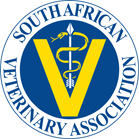Original Research
Isolation of pathogenic aerobic bacteria from the blood of septicaemic neonatal calves and the susceptibility of isolates to various antibiotics
Journal of the South African Veterinary Association | Vol 81, No 2 | a115 |
DOI: https://doi.org/10.4102/jsava.v81i2.115
| © 2010 E. Kirecci, Y. Ozkanlar, M.S. Aktas, M.H. Uyanik, H. Yazgi
| This work is licensed under CC Attribution 4.0
Submitted: 07 May 2010 | Published: 08 May 2010
Submitted: 07 May 2010 | Published: 08 May 2010
About the author(s)
E. Kirecci,Y. Ozkanlar,
M.S. Aktas,
M.H. Uyanik,
H. Yazgi,
Full Text:
PDF (171KB)Abstract
An automated blood culture system (BACTEC 9240) was used for the isolation of aerobic bacteria from the blood of septicaemic neonatal calves. Blood samples were collected from 90 clinically septicaemic and 20 healthy neonatal calves and inoculated into blood culture bottles. There were 89 significant isolates from 90 positive blood cultures using the BACTEC system. Escherichia coli was the most common pathogen detected accounting for 56 (63 %) out of 89 isolates. The other pathogens were β-haemolytic streptococci (15.7 %), Staphylococcusaureus (10.1 %), Klebsiella sp. (5.6 %) and Corynebacterium sp. (5.6 %). All isolates showed a susceptibility rate of 100 % to enrofloxacin, cefepim, cefoperazone / sulbactam, imipenem and meropenem while some of them were ranged from 75 to 91.7 % susceptible to amoxicillin / clavulanic acid, ampicillin / sulbactam, gentamicin and cephalosporins.
Keywords
No related keywords in the metadata.
Metrics
Total abstract views: 2957Total article views: 3530
Crossref Citations
1. Diagnostic clinical microbiology
Joseph M. Blondeau, Shelley C. Rankin
Journal of Veterinary Pharmacology and Therapeutics vol: 44 issue: 2 first page: 250 year: 2021
doi: 10.1111/jvp.12962
